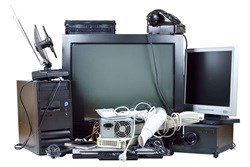The percentage of ageing and obsolete devices in today's corporate networks around the globe is at its highest in six years, signalling that the global financial crisis of recent years still has a lingering effect today.
More than 51% of all devices assessed are now ageing or obsolete. In addition, 27% of all devices are now "later" in their product lifecycle and at the point where the vendor begins to reduce support according to Dimension Data's annual Network Barometer Report 2014.
Raoul Tecala, Dimension Data's business development director for networking said: "Over the past few years, we've seen the proportion of ageing and obsolete devices steadily increase, and the conventional assumption was that a technology refresh cycle was imminent. However, our data reveals that organisations are sweating their network assets for longer than expected."
Tecala said that there are three main drivers behind this trend. Firstly, following the economic crisis, organisations are keeping a sustained focus on cost savings - particularly reduced capex budgets.
Secondly, there's a growing availability and uptake of as-a-service ICT consumption models, which reduce the need for organisations to invest in their own infrastructure. Finally, we believe that the advent of programmable, software-defined networks may be causing organisations to wait and see before selecting and implementing new technology - a factor we expect will become more influential in the next 18 to 36 months.
"We expect that growth in cloud computing, mobility and the number of connected 'things' will put additional strain on the network and that clients will have to re-look at their network architecture, not the individual devices," explained Tecala.
From a regional perspective
Looking at the data from a regional perspective, the Americas, Asia Pacific, and Europe showed notable increases in the percentage of ageing and obsolete devices, while Australia and the Middle East & Africa (MEA) appear to have improved marginally compared to last year. "Much of the increases can be explained by macroeconomics. Network spend is often linked to regional economic conditions: it slows down during sluggish periods and accelerates during times of growth.
"Last year, Australia and MEA showed higher percentages (over 50%) of ageing and obsolete devices compared to the Americas (37%), Europe (41%) and Asia Pacific (44%). This trend mirrors the slowdown in MEA and Australia economy. Meanwhile the economic slump in Asia Pacific inflated the region's percentage of ageing devices. The Americas continued its steady growth, which resulted in a higher percentage of ageing devices, although not quite as high as in other regions," added Tecala.
Other interesting statistics around ageing and obsolete networks in the Network Barometer Report include:
- Three verticals showed large increases: financial services (+13%); government, health care, and education (+11%); and service providers and telecommunications (+33%). In the financial services; and government, health care, and education sectors, the increase in the percentage of ageing and obsolete devices supports Dimension Data's view that the global financial crisis of recent years still has a lingering effect today. The result is a tendency to sweat network assets for longer in these verticals, due to a lack of funds for technology refresh when it's not seen as critical.
- In the service providers and telecommunications vertical, the substantial ageing of assets could be due to various factors. Service providers and telecommunications companies are, typically, massive organisations with significant operational staff complements and relatively mature support processes to manage their networking infrastructures. These organisations can therefore afford to take on the greater risk of ageing networks.
Service providers may also be sweating the assets they've deployed on clients' premises. In many cases, this equipment serves primarily as a point of demarcation, or as "network termination units", for the network connectivity provided by the service provider. So the service provider may not require the advanced features of newer devices, which would be the primary motivation to refresh or upgrade equipment.








































